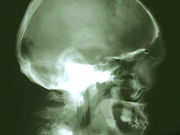Findings for oncologic surgeons performing TORS for squamous cell carcinoma of the oropharynx
MONDAY, Feb. 13, 2017 (HealthDay News) — The learning curve for transoral robotic surgery (TORS) for squamous cell carcinoma of the oropharynx (OPSCC) is surgeon-specific, according to a study published online Feb. 9 in JAMA Otolaryngology-Head & Neck Surgery.
William G. Albergotti, M.D., from the University of Pittsburgh Medical Center, and colleagues examined learning curves for oncologic TORS surgeons in a retrospective review of patients undergoing TORS for OPSCC. A total of 382 transoral robotic procedures were identified, of which 160 met the inclusion criteria for three surgeons (68, 37, and 55 for surgeons A, B, and C, respectively).
The researchers found that the inflection points for the final margin status learning curves were 27 and 25 cases for surgeons A and C, respectively. For surgeon B, there was no inflection point for final margin status. For the mean time to resection, inflection points were 39, 30, and 27 cases, respectively, for surgeons A, B, and C.
“Using metrics of positive margin rate and time to resection of the main surgical specimen, the learning curve for TORS for OPSCC is surgeon-specific,” the authors write. “Inflection points for most learning curves peak between 20 and 30 cases.”
Full Text (subscription or payment may be required)
Copyright © 2017 HealthDay. All rights reserved.








